What is On-Page SEO and Why is it Important?

On-Page SEO, or internal SEO, refers to the set of actions you perform within your website to improve its ranking in search engines like Google. These actions include optimizing content, site structure, HTML tags, and other website elements. The importance of On-Page SEO lies in its ability to help search engines better understand the topic and content of your site’s pages, thereby displaying your site higher in search results.
In fact, On-Page SEO plays a key role in increasing your website’s visibility online. By correctly optimizing internal factors, you can attract more organic traffic and ultimately achieve your business goals. A successful On-Page SEO strategy ensures that your website ranks higher for relevant keywords and attracts more customers.
The importance of On-Page SEO is not limited to rankings; it also improves User Experience. A well-optimized website will be more appealing and efficient for users. High loading speed, responsive design, and quality content are among the factors that can enhance user experience and, consequently, strengthen your site’s On-Page SEO.
In summary, On-Page SEO is a long-term investment that can bring significant results for your business. By focusing on optimizing internal website factors, you can improve your site’s ranking in search engines, attract more organic traffic, and provide a better user experience for your visitors. On-Page SEO is one of the fundamental pillars of a successful SEO strategy and should not be overlooked.
Worried about losing customers because you don’t have a professional e-commerce site?
With e-commerce website design by Rasawweb, forget these worries!
✅ Significant increase in sales and visitor-to-customer conversion rate
✅ Professional and user-friendly design that builds customer trust
⚡ Get free consultation from Rasawweb
Keyword Research: Finding the Best Opportunities
![]()
Keyword Research is a process of identifying and analyzing the words and phrases users employ when searching on search engines. This process helps you understand what topics are important to your audience and how you can create content that meets their needs. Keyword research is the foundation of any successful On-Page SEO strategy.
To start keyword research, you can use various tools such as Ahrefs, SEMrush, Ubersuggest, and Google Keyword Planner. These tools provide you with information about search volume, competition level, and related keywords. You can also use free tools like Google Trends to identify search trends.
When choosing keywords, look for words that have a good search volume while also having less competition. These keywords are golden opportunities to achieve high rankings in search results. Also, pay attention to the user’s search intent. Is the user looking for information or intending to make a purchase? Tailor your content based on user intent to get the best results.
Keyword research is an ongoing process. As user behavior and search engine algorithms change, new keywords may emerge, and old ones may lose their importance. Regularly review and update your keywords to ensure the effectiveness of your On-Page SEO strategy. A strong keyword research strategy can significantly impact the success of your On-Page SEO efforts.
Optimizing Page Title (Title Tag) and Meta Description

The Page Title (Title Tag) and Meta Description are two important HTML elements displayed in search results. The page title is the main title of the page, shown at the top of the browser window and in search results. The meta description is a brief explanation of the page’s content, displayed below the page title in search results.
Optimizing the page title and meta description is very important for On-Page SEO because these two elements are the first things users see in search results. An attractive page title and a compelling meta description can encourage users to click on your site’s link and enter your site.
To optimize the page title, use the main keyword of the page in the title. The title should be a maximum of 60 characters to be fully displayed in search results. Also, the title should be attractive and catchy to encourage users to click.
To optimize the meta description, provide a brief and engaging explanation of the page’s content. Use the main keyword of the page in the meta description. The meta description should be a maximum of 160 characters to be fully displayed in search results. Also, the meta description should tell users what they will find on the page if they click on the link.
The page title and meta description are valuable opportunities to attract organic traffic. By correctly optimizing these two elements, you can increase your click-through rate (CTR) in search results and drive more traffic to your site. On-Page SEO requires attention to detail, and optimizing these elements is part of that attention to detail.
| Element | Description | Best Practices |
|---|---|---|
| Page Title (Title Tag) | The main title of the page displayed in search results. | Use the main keyword, max 60 characters, attractive and catchy. |
| Meta Description | A brief description of the page content displayed in search results. | Use the main keyword, max 160 characters, attractive and compelling. |
Content Optimization: Creating Valuable and Engaging Content
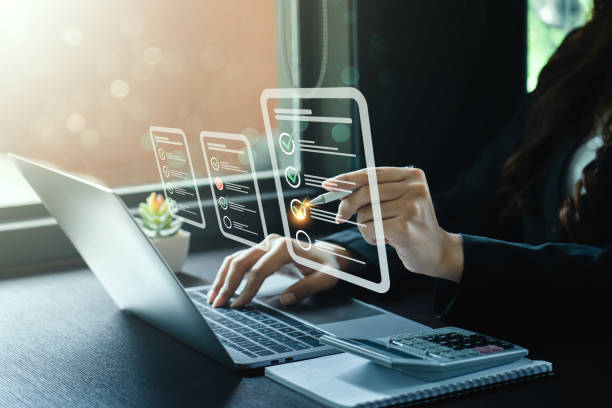
Content is the king of On-Page SEO. Producing valuable and engaging content is one of the most important ranking factors in search engines. Content that is useful and attractive to users is also noticed by search engines and achieves a higher ranking.
To optimize content, you must first understand your audience’s needs. What questions do they have? What information are they searching for? Create your content based on these needs. Your content should be comprehensive, accurate, up-to-date, and easy to understand. Use images, videos, and other multimedia elements to make your content more engaging.
Use keywords naturally within your content. Avoid overusing keywords, as this can lead to penalties from search engines. Instead, try to use keywords naturally and in the appropriate context. On-Page SEO does not mean tricking search engines; rather, it means providing valuable content to users.
Design your content structure to be scannable and readable for users. Use headings, subheadings, lists, and short paragraphs to organize your content. This helps users quickly find the information they need and enjoy reading your content. Quality content increases user dwell time on your site, which is a positive signal for search engines.
Are you losing business opportunities due to an outdated website? With Rasawweb, permanently solve the problem of not attracting potential customers through your website!
✅ Attract more high-quality leads
✅ Increase brand credibility in the eyes of customers
⚡ Get free consultation for corporate website design
Image Optimization: Reducing Size and Using Alt Text
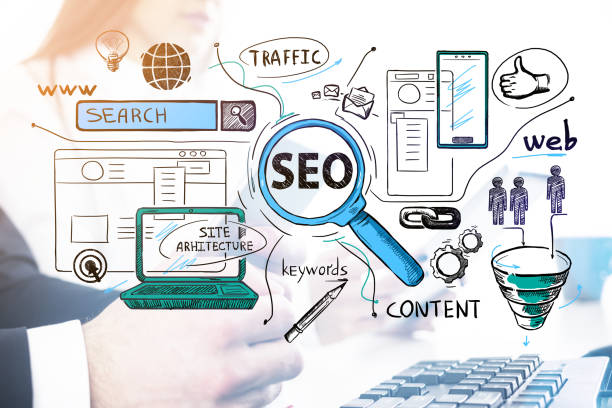
Images play an important role in your website’s visual appeal and user experience. However, using large images can reduce your site’s loading speed and, consequently, affect user experience. Image optimization for On-Page SEO involves reducing image size and using Alt Text.
To reduce image size, use compression formats such as JPEG or WebP. Also, resize images to the dimensions they will be displayed on the site. Using online tools like TinyPNG or ImageOptim can help you reduce image size.
Alt Text is the text displayed in place of an image if it fails to load. Alt text is a valuable opportunity to describe the image and use relevant keywords. Search engines use alt text to understand image content. Therefore, ensure you provide appropriate alt text for all your images. Alt text should be concise, descriptive, and relevant to the image content. Professional On-Page SEO requires attention to these details.
In addition to alt text, image file names should also be descriptive and relevant to the image content. For example, instead of using the file name “IMG_1234.jpg,” use “on-page-seo-image-optimization.jpg.” This helps search engines better understand what the image is about.
Image optimization not only helps improve your site’s loading speed but also helps search engines better understand your site’s content. By correctly optimizing images, you can also improve your site’s ranking in image search results. This is one of the important and often overlooked aspects of On-Page SEO.
URL Structure Optimization: Creating Short and Descriptive URLs
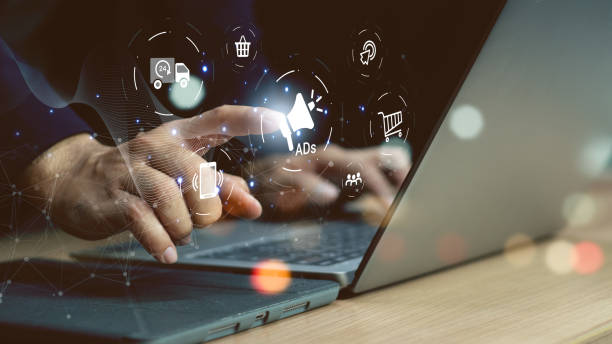
URL structure plays an important role in On-Page SEO and user experience. Short, descriptive, and understandable URLs help search engines and users better understand what the page is about. Long and complex URLs can be confusing for search engines and may also disorient users.
To optimize your URL structure, use short and descriptive URLs. The URL should include the main keyword of the page. Avoid using uppercase letters, numbers, and unnecessary punctuation in your URL. URLs should be in English and lowercase. Use hyphens (-) instead of underscores (_) to separate words in the URL.
Your site’s URL structure should be logical and hierarchical. For example, if your site is an online store, product URLs should include the product category. This helps search engines better understand your site’s structure and display relevant content to users. A well-organized and optimized URL structure is one of the main pillars of On-Page SEO.
Avoid changing your page URLs without a valid reason. If you must change a URL, be sure to use a 301 redirect to guide users and search engines to the new URL. A 301 redirect informs search engines that the page has permanently moved to a new URL and transfers the page’s ranking to the new URL. Sudden changes in URL structure can harm your site’s ranking.
Optimizing URL structure is a simple but effective action in On-Page SEO. By creating short, descriptive, and understandable URLs, you can help search engines and users better understand what the page is about and improve your site’s ranking in search results. An optimized URL acts like a signboard, guiding users to their desired destination.
Internal Linking: Creating a Network of Links on the Site
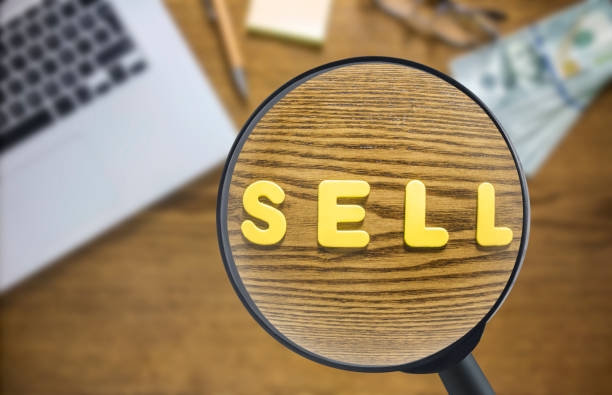
Internal Linking refers to the process of creating links between different pages of a website. Internal links help search engines better understand your site’s structure and find relevant content. Also, internal links help users easily navigate your site and gain more information. Internal linking is one of the most important aspects of On-Page SEO.
To create effective internal links, use appropriate anchor text. Anchor text is the text that links to another page. Anchor text should be descriptive and relevant to the content of the destination page. Avoid using generic anchor texts like “click here.” Instead, use anchor texts that tell users and search engines what they will find on the destination page if they click the link.
Place links naturally within your content. Avoid over-linking, as this can harm user experience. Links should be naturally embedded in the text and help users gain more information. On-Page SEO should be done in a way that benefits users.
Give more links to important pages on your site. Pages that are more important for your business should receive more links from other pages on the site. This shows search engines that these pages are more important and should be displayed higher in search results. Internal linking is a powerful strategy for directing “link juice” to important pages on your site.
| Goal | Description | Best Practices |
|---|---|---|
| Improve Site Structure | Help search engines understand the site’s structure. | Create links between related pages, use descriptive anchor text. |
| Improve User Experience | Help users find more information and navigate the site. | Place links naturally in content, avoid excessive linking. |
Site Speed Optimization: Providing a Fast and Smooth Experience
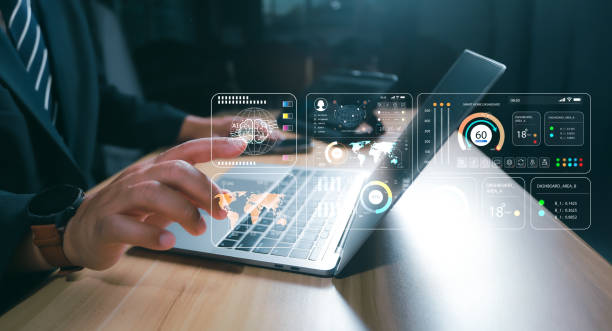
Site speed is an important factor in search engine rankings and user experience. Users who have to wait a long time for a page to load are likely to leave your site and go to another. Search engines also prefer sites with high loading speeds and give them higher rankings. Site speed optimization is an essential step in On-Page SEO.
To optimize site speed, use various tools such as Google PageSpeed Insights and GTmetrix. These tools help you identify issues related to your site’s speed and provide solutions to fix them. Some of the most important site speed optimization strategies include:
- Image optimization
- Enabling Gzip compression
- Using a CDN (Content Delivery Network)
- Minifying HTML, CSS, and JavaScript
- Database optimization
Appropriate web hosting also plays an important role in site speed. Use a reputable and high-quality hosting provider that supports modern technologies. Inadequate hosting can severely reduce your site’s speed and render your On-Page SEO efforts ineffective.
Site speed optimization is an ongoing process. Regularly check your site’s speed and fix any potential issues. By providing a fast and smooth experience to users, you can improve your site’s ranking in search engines and attract more organic traffic. On-Page SEO means providing the best possible user experience, and site speed is part of that experience.
Does your current e-commerce website design not generate the sales you expect?
Rasawweb is an expert in professional e-commerce website design!
✅ An attractive and user-friendly website aimed at increasing sales
✅ High speed and security for an ideal shopping experience⚡ Get a free consultation for online store design with Rasawweb!
Mobile Optimization: Compatibility with Mobile Devices
![]()
With the increasing use of mobile phones for internet searches, Mobile Optimization has gained special importance. Google prefers websites that are optimized for mobile and gives them higher rankings. Mobile optimization is one of the main pillars of On-Page SEO in today’s world.
To optimize your site for mobile, use Responsive Design. Responsive design means that your site automatically adapts to the screen size of different devices (mobile, tablet, desktop). By using responsive design, you can ensure that users have a good user experience on any device.
Mobile site speed is even more important. Mobile users are usually more impatient and expect site pages to load quickly. Therefore, optimizing site speed for mobile is of particular importance. Use the site speed optimization techniques explained in the previous chapter to increase your site’s speed on mobile. Mobile On-Page SEO is a significant challenge for many websites.
Ensure your site is optimized for touch (Touch-Friendly). Buttons and links should be large enough for users to easily tap them. There should be sufficient space between buttons and links so users don’t accidentally click another button or link. On-Page SEO requires attention to detail, and mobile user experience is one of the most important details.
Monitoring and Analyzing Results: Continuous Evaluation and Improvement

On-Page SEO is an ongoing process and requires monitoring and analysis of results. After implementing optimization measures, you should regularly review your results to see if you have achieved your goals. If you have not achieved the desired results, you should change your strategy and implement new optimization actions.
To monitor and analyze results, you can use various tools such as Google Analytics and Google Search Console. Google Analytics provides you with information about site traffic, user behavior, and conversion rates. Google Search Console provides you with information about your site’s performance in search results, the keywords your site ranks for, and potential site errors.
Regularly check your keywords and see if your site’s ranking for these keywords is increasing. If your site’s ranking is decreasing, you should investigate what factors caused this decline and find solutions to improve your site’s ranking. On-Page SEO requires continuous tracking and analysis.
Regularly update your site’s content and produce new content. Fresh and updated content is more attractive to search engines and achieves a higher ranking. Also, new content can help attract new users to your site. On-Page SEO means providing valuable and up-to-date content to users.
Frequently Asked Questions
| Question | Answer |
|---|---|
| What is Meta Title and why is it important in On-Page SEO? | The meta title is the most important On-Page SEO element displayed at the top of the browser tab and in search results. It helps search engines and users understand the main topic of the page and should include the main keyword. |
| What role does Meta Description play in On-Page SEO? | The meta description is a short summary of the page’s content displayed below the title in search results. Although it doesn’t directly impact rankings, its attractiveness can increase the click-through rate (CTR). |
| How should keywords be used in page content? | Keywords should be used naturally and relevantly in strategic locations such as the title, headings, first paragraph, and body text. Avoid excessive keyword stuffing. |
| What is the importance of high-quality and comprehensive content in On-Page SEO? | High-quality, unique, informative, and comprehensive content that addresses user needs is of great importance. Search engines give higher rankings to content that creates real value. |
| What is the use of Heading Tags (H1-H6) in On-Page SEO structure? | Heading tags (H1, H2, H3, etc.) are used to structure content and indicate the importance of different sections. H1 is the main title of the page, and each page should have only one H1. Other tags are used for subheadings. |
| How can images be optimized to improve On-Page SEO? | To optimize images, use descriptive Alt Text that includes relevant keywords, reduce the image file size without losing quality, and use meaningful and relevant file names. |
| What are the characteristics of an SEO-friendly URL? | An SEO-friendly URL should be short, readable, descriptive, include main keywords, and be free of unnecessary characters. The URL structure should be hierarchical and logical to be understandable for both users and search engines. |
| How does Internal Linking help On-Page SEO? | Internal linking, by connecting related pages, helps users and search engine crawlers better understand the site’s structure, transfers page authority (link juice), and increases user dwell time on the site. |
| What is the impact of page loading speed on On-Page SEO? | High loading speed is crucial for both user experience and SEO ranking. Slower pages may be ignored by search engines and lead to an increased bounce rate. |
| Why is Mobile-Friendliness very important in On-Page SEO? | Given the increasing number of searches via mobile devices, having a responsive and mobile-friendly site is essential for user experience and ranking in search results (Google’s mobile-first indexing). |
And other advertising services from Rasawweb Advertising Agency:
Smart Google Ads: A fast and efficient solution for improving SEO rankings with a focus on custom programming.
Smart Advertising Campaign: A dedicated service for growth in customer behavior analysis based on custom programming.
Smart Advertorial: A dedicated service for digital branding growth based on Google Ads management.
Smart Conversion Rate Optimization: A professional solution for user engagement with a focus on custom programming.
Smart UI/UX: Designed for businesses looking to increase click-through rates through user experience customization.
And over hundreds of other services in the field of internet advertising, advertising consulting, and organizational solutions.
Internet Advertising | Advertising Strategy | Advertorial
Sources
On-Page SEO TutorialWhat is On-Page SEO?What is On-Page, Off-Page, and Technical SEO?What is On-Page SEO?
🚀 For your business to leap forward in the digital world and reach the pinnacle of success, Rasawweb Afarin Digital Marketing Agency, specializing in e-commerce website design and comprehensive marketing strategies, is with you to experience a powerful and profitable presence.
📍 Tehran, Mirdamad Street, next to Bank Markazi, Kazerun Jonoubi Alley, Ramin Alley, No. 6

